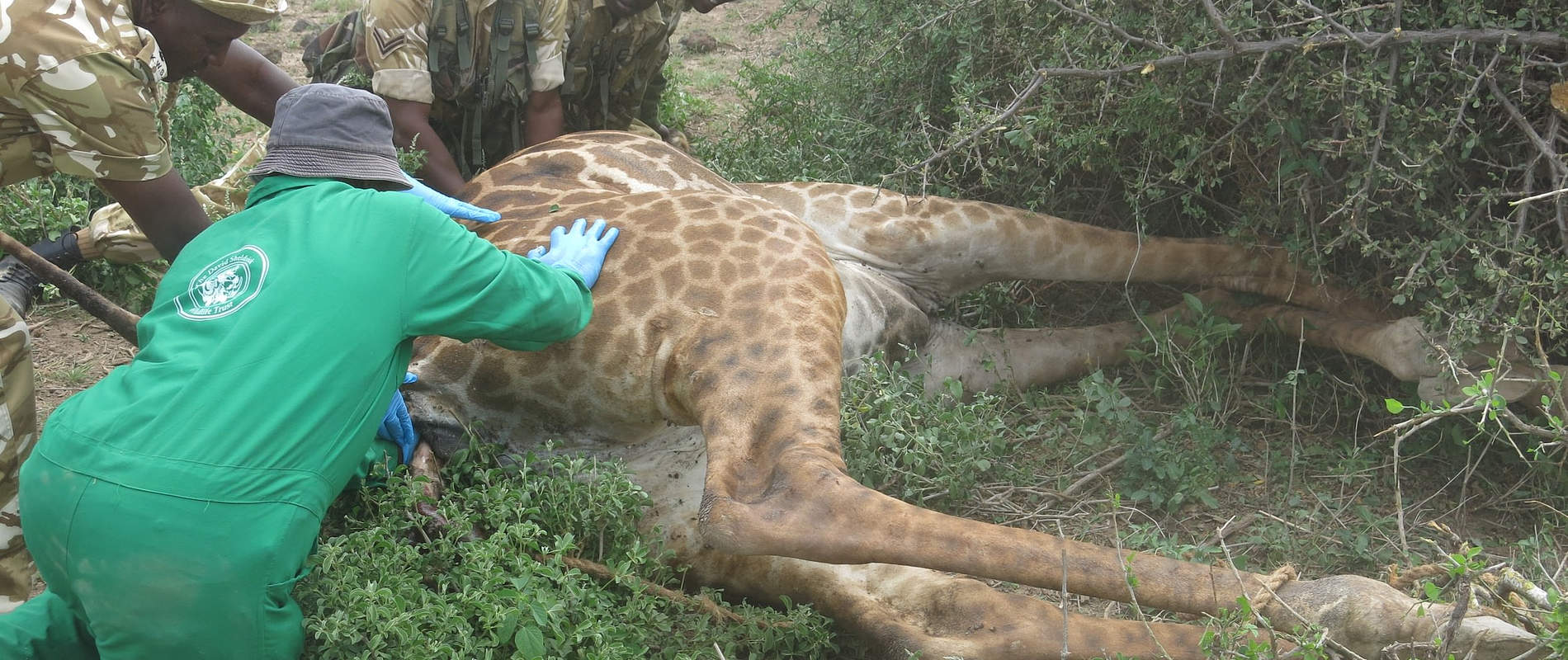FIELD VETERINARY REPORT FOR SOUTHERN CONSERVATION AREA MOBILE VETERINARY UNIT FOR THE MONTH OF MAY 2017 Report by Ndambiri Ephantus Introduction The prevalent threat to Amboseli’s superlative prairies lies in fragmentation which eventually causes the collapse of migratory herds of zebras, wildebeests, elephants and, in a way, pastoral livestock
FIELD VETERINARY REPORT FOR SOUTHERN CONSERVATION AREA MOBILE VETERINARY UNIT FOR THE MONTH OF MAY 2017
Report by Ndambiri Ephantus
Introduction
The prevalent threat to Amboseli’s superlative prairies lies in fragmentation which eventually causes the collapse of migratory herds of zebras, wildebeests, elephants and, in a way, pastoral livestock. The fall of rains in late April and early May marks the seasonal migrations and movements of wildlife through the habitats of the Amboseli Ecosystem giving the National Park’s deprived vegetation ample time to rejuvenate as very scanty populations are in habitation.
Surprisingly, during May, a stray male cheetah caused panic within Loitoktok town residential area for two days before it was successfully captured and translocated to Amboseli National Park. Clinically one female elephant was treated for a spear wound and a Maasai giraffe had dystocia. Hopefully similar injuries will not be experienced in months to come as the ecosystem rainy season culminates.
Following are veterinary activities attended to during the month;
VET UNIT PATROL AND SURVEILLANCE
Location: Amboseli National Park
May was characterized by rains bringing relief to wild animals. Within the swampy and marshy areas few elephants were spotted browsing happily as water birds were busy wading. Greater and lesser flamingos in the hundreds were spotted filtering the algae as flood water increased in volume daily due to rain. The vegetation has begun regenerating and the plains are filled with water as water drains into the park from surrounding conservation areas. This causes animal movements from the park into higher grounds within the Community Conservancies, relieving pressure on the park which is advantageous for the vegetation regeneration. This movement out of the park calls for concerted efforts of all stake holders in order to intensify the patrols within the community conservancies and along the migratory corridors in order to ascertain the animals’ wellbeing. We have alerted all the Community Conservancy Security organizations and Non-Government organizations within the ecosystem. This will ensure that all injured animals are reported early for prompt intervention.
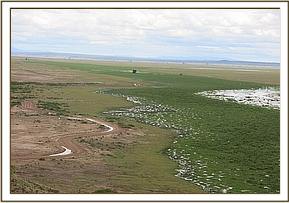

Location: Kimana Sanctuary; Amboseli Ecosystem
Kimana Sanctuary has been a haven for wild animals within the Amboseli ecosystem. The sanctuary depicts tranquility of unequal measure because there are no human activities within, other than vehicles on safari. As a result the Sanctuary attracts and supports an abundant wildlife population of all species, from small to large. It acts as a stopover for transit animals from Amboseli National Park to the Tsavo Ecosystem as well as a residential niche for non-immigrants.
The sanctuary’s vegetation is impeccable riddled with huge acacia trees, under which soft grass grows, thickets and scattered bushes with a vast open savannah covered with different grass species. The clear permanent spring through the sanctuary quenches all the terrestrial, aquatic and arboreal species. Thus everyone is capable of feeding, drinking, wallowing, submerging, resting, bedding and nesting within the sanctuary. A dedicated security team patrols the Sanctuary both on foot and on vehicles. Any animal in need of vet attention is thus promptly sighted and reported for a timely intervention. It is this team’s spirit which attracts other security teams to the sanctuary just to give them encouragement and also watch spectacular populations within the sanctuary. These include but are not limited to Amboseli National Park Security and Research Team, Big Life Foundation Security and Rapid Response Teams, County Security and Intelligence Teams plus the Southern Conservancy Mobile Veterinary Unit. All these teams meet now and then within the area as each carries on with its duties.
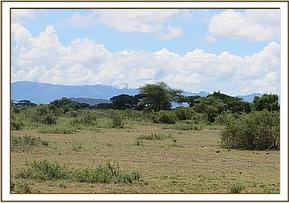

Location: Selenkay Community Conservancy; Amboseli Ecosystem
Selenkay Conservancy is 15,000 acres of private wildness in the heart of Maasai country near Amboseli. It is 10 miles north of Amboseli over the northern boundary of Amboseli National Park. It shares the same eco-system as Amboseli National Park and is established on lands leased from the local Maasai by Porini with the aim of protecting wildlife habitat and encouraging wildlife conservation as an alternative to farming as a means for the local population to earn a living.
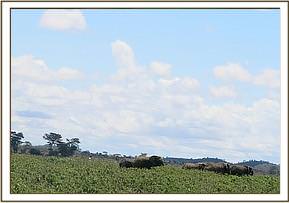

The Conservancy encourages migrating species from Amboseli, previously killed or driven off land set aside for farming, to be their home. This has resulted in a significant increase in wildlife numbers with elephants returning to make the land their own. In the past the Conservancy, through Big Scout Foundation scouts who are equipped with vehicles, radios and field equipment, has been able to report animal injuries necessitating veterinary intervention seen during their regular patrols. The Vet Unit arranged to meet the Scouts, Porini Camp Management and Lion guardians in order to share information regarding the wellbeing of the wild animals. During the visit large numbers of animals were seen including Thompson and Grant’s gazelles, giraffes, zebras, ostriches among many other indigenous species. The harmonious coexistence of the wild and domestics was echoed by the scouts who had no adverse report to make.
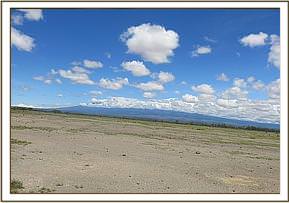

PREPARATION OF DSWT FORTY YEARS CELEBRATIONS
Date: 19-21/05/2017
Location: Amboseli Ecosystem
The Vet team hosted two DSWT guests sent in by the DSWT CEO in preparation for the cerebration of 40 years of DSWT in conservation work. The guests resided at the Amboseli Elephant Research Camp and over three days the vet team demonstrated its’ work and how it works with other conservation organizations, especially the ATE, Community Conservancies, NGOs and KWS. They were also lucky enough to witness the rescue of a male stray cheetah which had been reported in Loitoktok town residential area. This was a true demonstration to the guests of what a rescue involves right from partners’ interaction and coordination, resources involved, challenges and goals to be achieved.

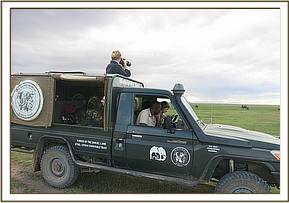
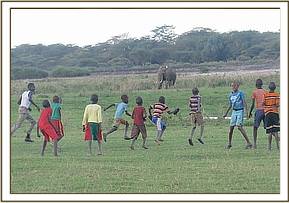

CASE#1 CAPTURE OF STRAY CHEETAH
Date: 20th – 21st May 2017
Species: Cheetah
Sex: Male
Age: Sub-adult
Location: Loitoktok Town Residential Area
History
This cheetah was reported by the KWS Loitoktok Station Warden as it had strayed into the densely built and populated residential area. Residents were aware of the animal presence thus causing fear and panic. The Vet Team was on standby until there was confirmation that the animal was found. The Vet Team remained on standby from 8am till 5pm when the vet team was assured that the animal had been identified and spotted by the problematic control team.
The residential compound where the animal was found had little human farming activity and no one resided there thus the animal was at peace hidden in a small thicket. A huge crowd had gathered making the situation more dangerous. The Team managed to keep the crowd quiet as the vet unit attempted to dart the animal. The Vet Unit combed the area cautiously for more than an hour but it seemed like the animal had slipped away unnoticed. Vehicles were brought in to wade through the small thicket and illuminate the area as night had already begun to fall. Lastly two thunder flashes were used but all was in vain as the animal was nowhere to be seen. The operation was suspended until the next day and the rangers from Loitoktok KWS Station and community were requested to report if the animal was sighted.
The following day at about 8am the cheetah was spotted in a maize field in the next residential compound neighbouring the previous one. The Vet Team was informed by the KWS Station Loitoktok and immediately rushed to rescue the animal. On the site the animal was tired and stressed, a crowd had gathered again, shouting and making noise, stressing the animal even more. Unfortunately before the Vet Unit was fully ready for the exercise the crowd overwhelmed the rangers and frightened the cheetah which ran through the crowd starting a stampede. No injury was reported from the scare. It ran into and out of several fenced residential compound forcing the residents to stay indoors. A search ensued for three hours all in vain. The crowd cleared slowly and the Vet Unit made plans for the next course of action.
At 17:30hrs the vet received a call from one of the residents that the animal was in her compound only 20 minutes away. The team walked carefully into the compound and the search ensued again. The animal kept dodging us as it went into and out of fenced compounds changing streets. Noise from residents and their livestock/domestic animals frightened the cheetah even more and it continued to evade us. Gated and fenced residential plots also posed a challenge as residents had panicked and secured all gates with padlocks so the team had to scale fences and go through thorny live fences sustaining soft tissue injuries. Despite the obstacles, the team remained determined as night was quickly setting in and the area was in a panicky mood. Eventually the cheetah was cornered in one of the compounds and successfully darted from foot after a cautious approach.
Immobilization and translocation
The cheetah was darted with 50mgs Ketamine and 1mgs Medetomidine. Immediately after dart impact it ran away, scaling a five meter high stone wall and entered the Kilimanjaro Girls’ Secondary School sending pupils into a panic running into dormitories and classrooms. It wandered a little and was finally immobilized under a thorny live fence after five minutes. It was taken out of the school compound on a stretcher and loaded onto a waiting pick up.
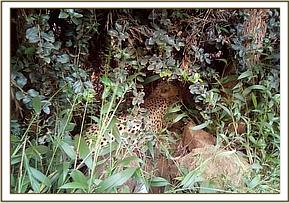

The captured cheetah was released into the Amboseli National Park. The administration confirmed the release site suitable for the candidate and the release was done
Reversal
After a quiet off-load, the candidate was reversed with 25mgs Atipamezole injected intramuscularly. It took 17 minutes to awaken and shake off the narcosis completely before vanishing into the nearby palm forested area. Monitoring will ensue to establish its adaptation to the new habitat.
CASE #2 EMACIATED WATERBUCK
Date: 24th May 2017
Species: Waterbuck
Sex: Female
Age: Adult
Location: Amboseli National Park
History
While on patrol within Amboseli National Park the Vet Team spotted a seemingly emaciated and ill adult female waterbuck.
Immobilization, examination and treatment
The animals was immobilised using 5mgs Etorphine and 50mgs Xylazine. It was not easy approaching it as it kept wandering into and out of thickets which formed the vegetation of habitation. After several approaches using the vehicle it was darted and eventually assumed sternal recumbence after four minutes. It was approached from behind and blindfolded then placed on left lateral recumbence.


It was established that she was in advanced pregnancy and her dentition was not in good condition. Her teeth were heavily worn out almost to the gum line, depicting old age. She was sampled for whole blood from which blood chemistry and hemoparasite examination could be done. Faecal samples were also taken for faecal egg count and ticks for identification.


The vet administered 20ml Catosal as a metabolic stimulant, 5mgs Ivermectin for parasites and 4500mgs Tetracycline as a broad spectrum antibiotic cover. The dart wound was infiltrated with 5gms of Cloxacilin antibiotic cream to prevent abscessiation. Both eyes were infiltrated with another cream tube to prevent corneal damage.
Reversal and Prognosis
It was reversed 17 minutes post darting with a mixture of 31.25mgs Yohimbine and 12mgs Diprenorphine administered into jugular vein. It was up in three minutes and disappeared into the nearby bush. Good following plenty of browse after the rains.
CASE #3 ELEPHANT TREATMENT
Date: 28th May 2017
Species: Elephant
Sex: Female
Age: Adult
Location: Amboseli National Park
History
The Amboseli Elephant Research trust while on their patrol within Amboseli National Park spotted an emaciated female elephant foraging in one of the marshy areas. It was a well-known candidate about 17 years old and had never been in such poor condition. They established an injury that was oozing pus on the dorsal part of the rump. Immediately they called the vet team who responded instantaneously to offer an intervention.
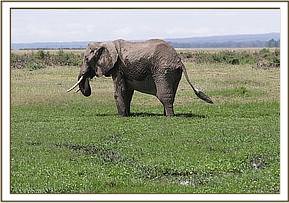

Immobilization, examination and treatment
The elephant was forced out of the marshy area and darting using 11mgs Etorphine and 1500IU Hylase in 1.5cc dart propelled by Dan Inject system. The elephant panicked and ran away only to be fully immobilized in five minutes assuming left lateral recumbence. The right ear was used as blind fold and the trunk was kept patent by use of a stick placed across the distal opening. She was dowsed with plenty of water on the ears to avoid hyperthermia. She had lost condition considerably; body condition rating at 2.5 on a scale of 1 - 5. The injury to the rump was caused by a spear and the pus was thick creamy meaning the injury was more than two weeks old.
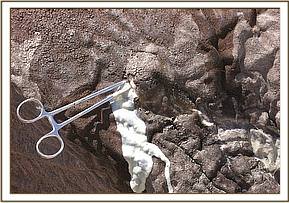

The wound was enlarged using a surgical blade to allow maximal access and drainage of the wound. It was probed using long forceps to determine its depth and also to detect any foreign body. It was about 20cm deep and had no foreign body. It was cleaned thrice by infiltrating 200mls Hydrogen peroxide followed by draining after which half a litre Tincture of Iodine was used to rinse the pouch. The pouch was infiltrated with 15000mgs Amoxicillin followed by wet green clay. Superficially it was sprayed with Tetracycline wound spray to repel flies. Systemically it was covered with 50ml Catosal as a metabolic stimulant and 15000mgs Amoxicillin as a broad spectrum antibiotic. Because of the swelling at the wound periphery, 50mgs Dexamethasone was injected intramuscular to minimize inflammation.
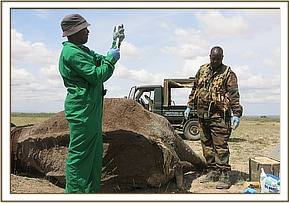
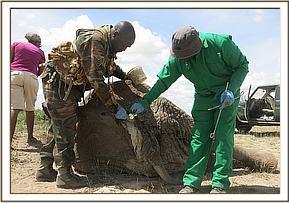

Reversal and Prognosis
Reversal of the anaesthetic was achieved by administration of 80mgs Naltrexone into the superficial ear vein. Complete reversal was attained after three minutes and she vanished in the nearby acacia trees. Another treatment will be done after 10-15 days if spotted. Prognosis is guarded because it was not possible to determine whether the spear was poisoned or not.
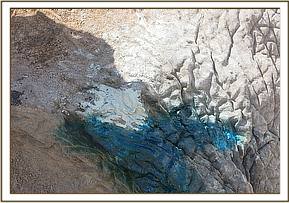
CASE#4 GIRAFFE WITH DYSTOCIA
Date: 31/05/2017
Species: Maasai Giraffe
Sex: Female
Age: Adult
Location: Amboseli National Park
History
This giraffe had been spotted about five days earlier within Kitirua Community Conservancy by one of the herders who saw two limbs protruding from the vulva. He thought it was normal partulation process thus didn’t make any report. After three days the same giraffe was seen at night fall by the Kitirua Community Conservancy manager. The following day an extensive search was mounted only for the giraffe to be located at the border of Community Conservancy and the Amboseli National Park. The Vet Unit was immediately informed by the KWS Kitirua Base and an intervention was launched.
Immobilization, examination and treatment
It was immobilized using 13mgs Etorphine and 50mgs Azaperone. from a vehicle and it was not startled by the approach. The dart was placed on the right humerus proximal region and it wandered little after darting and started a high stepping gait after five minutes. It was approached as it left stony area and tripped using a rope upon depicting star gazing stance. It assumed sternal recumbence and was aided to left lateral recumbence by ropes. It was blind folded using a towel and restrained manually after administration of 20mgs Naltrexone mixed with 12mgs Diprenorphine into the jugular vein.
The two limbs of the calf were still hanging out of vulva to the level of carpus. They were dry and hair had sloughed off. The inguinal area was wetted with water to allow hand examination into the birth canal. It was established that the foetus was extensively swollen due to decomposition and that there was right neck flexion followed by twisting of the same thus head was presented anteriorly. The dam was alert but ambulated with adducted hind limbs.


The only option was to manipulate the foetus followed by manual traction to effect delivery. One of the foreseen challenges was the enormous swelling of the dead foetus leaving virtually no room for movement. Attempts to push it back into the uterus were not easy as the dam pushed back. After 40 minutes of roping the dam down the team tried to pull out the foetus using traction by ropes tied on both protruding forelimbs all in vain. Eventually fetotomy ensued. A wire saw could not be used as there was no room to place the saw inside the birth canal. Attempts were made to dislodge the fore limbs individually from the fetus by skinning and anchoring the distal radius. Unfortunately the radius dislodged leaving the other stump forcing another anchor at the distal humerus but this was also a failed procedure. By this time the animal was down for one and a half hours, leading to concerns regarding the dams condition and possible complications. A caesarian section was considered but ruled out due to complications pre, during and post operation. It was eminent that the dam health had to be considered so the treatment was postponed with the aim of revisiting the giraffe in a few days. The fetal remnants were pushed back into uterus to allow free drainage from the uterus.
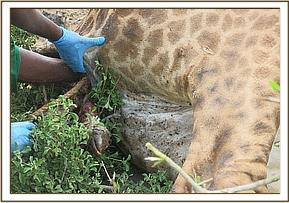

The giraffe was given a strong antibiotic to battle against infection from the foetus. It was covered with 100ml Multivitamin as metabolic stimulant, 3000mgs Tetracycline intramuscular as broad spectrum antibiotic and 100mgs Dexamethasone all intramuscularly at different muscle sites. Intra uterine 10 boluses of 5mg Sulphadimidine were inserted and left in place.
Reversal and Prognosis
Manual restrain was removed and by the time the last man was off the head she sprung up energetically at the second kick and trotted away only to stop 20 meters away.
Review is scheduled after seven to ten day when uterine drainage and lavage will be done extensively. Prognosis is guarded until after review when it will be considered afresh.
Acknowledgement
We give our heartfelt credit to DSWT for sufficient sponsor offered during the month. It was through concerted efforts of all players including KWS Fraternity, area NGOs and organization such as Big Life Foundation, Amboseli Trust for Elephant plus Community Conservancies that the above tasks were achieved. It is our hope that similar cooperation will be realized in days to come as we endeavor to offer solutions to suffering and needy wild animals.
